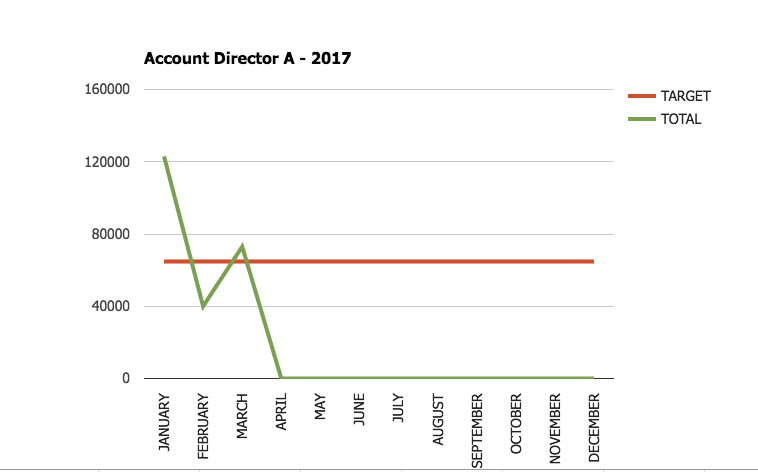
Basic creative agency economy
Being good in business is the most fascinating kind of art. Making money is art and working is art and good business is the best art.
– Andy Warhol
My first article in the series of agency life will focus on three economy terms you need to get familiar with. (there are more, however these four are the most important to get familiar and comfortable with to get the basis of agency business acumen in place) And also a framework for calculating a monthly target for your Account Directors (or Project Managers, department managers or whatever is applivcable to yourcompany).
When you run a creative agency and work with creativity, either it be data, design, marketing or technology related. I.e offer a service of some sort generated by delivering it as a result from intellectual work and emotional labour, you need your foundation in place for understanding the incoming value of your work as well as indicators of success or warning signs in client relationships, way or working/teams and accounts.
If you work a lot of hours you should get a lot of value generated back from that, otherwise you need to understand why this is and be able to change something.
In this article I cover:
Billability
Burn rate
Baseline
How to calculate a monthly target for your department or team of Account Directors
Billability
On my first day at a new agency, the first thing I do is to call the CFO or whomever is responsible for the economy, and get a report dating back at least 2-4 years (if possible) for the clients I’m responsible for. This helps me understand the progress and potential of the relationship as well as which client accounts that need immediate action in terms of changing the way we work with them.
Billability is a term to determine how many hours your team have worked on a project, versus actual hours that are billed to the client. Have you worked more or less in terms of your project agreement. This is something you should evaluate on a regular basis as well as track what type of activities are taking more time then you have in your agreement.
Some examples of hours that are not billed to a client on a project are the following and should be “written off” or excluded are for example; internal handovers or education in a team or hours for trainees on a project. (for example)
Billability is therefore a way to determine if your agency client relationships, work methods, proposals etc – are healthy and working for you both.
Burn rate
Burn rate is something I usually look at every week or two weeks. Burn rate is how many hours you have worked each day or week against what you have planned and in your budget for the project. It’s good to keep an eye on this and talk to your production manager if halfway through a project, you have already used 90% of the total hours budgeted but have a completion of said project which current status is just 45% done.
Some clients also want insight into this, and want a project burn rate report regularly.
Any time reporting software worth its name has a visual function for this. So it should not be more than a press of a button to have a report.
Baseline
Baseline is where you break even. You need to have a baseline, usually in terms of a hourly rate or daily rate indication. Which means what is the hourly rate for your agency to break even. That covers costs of salaries, office space, education, etc – everything that a company needs to exist. All your expenses. Calculated down to this hourly or daily rate.
This helps you to understand when your project team has reached a point where they may be working for free and a project is costing you money rather than making money.
This is also useful to know, because sometimes, you want to give a client a discount for some reason on the hourly rate, then you know how far you can go to lower it – but still ensure you both break even and make profit, and how much that profit actually is.
Also useful when you are in a pitch for work, if you for some reason want to compete on price rather than value delivered or competence.
How to calculate a monthly target for your department or team of Account Directors
You want to be able to have some kind of indication of what it takes to break even (hence baseline) but you also want to know what your monthly target is. If you are using this within a team, there is an easy framework to calculate a target.
Amount of Account Directors (or project managers)
Amount of employees
Baseline hourly rate
Billable hours each week
For example:
4 project managers
20 additional employees (24 total)
Average hourly rate £90
Average billable hours per week: 30h/per employee
30 x 4 = 120h monthly target for billability
120 x 24 = 2880 h monthly total for the entire office
2880 divided by 4 (AD/PM) = 720h
720h is the monthly target for each AD/PM
720 x £90 = £64 800
= £64 800 is the monthly target for each AD/PM
Some other options:
- You can calculate this excluding the AD/PM in the total number
- As well as with a higher or lower average amount of billable hours for each week
- Either you can calculate using an average hourly rate for each competence in your office
- or you can use the baseline hourly rate, which you need to break even, however I would never use that personally as I want a target that ensures that the company makes profit on the value which is delivered (otherwise it would be bad business)
- If you use a day rate, you simply calculate this by using amount of days rather than hours as I’ve done above.
Want to know what this could look like in terms of a monthly sales target report? Download an example here.
TERMS USED
Written off = you do not bill the client for this because this is an investment correlated to your own company and hence not something that the client should pay for (in my opinion)
http://www.veronicastenberg.com/wp-content/uploads/2016/10/Monthly-sales-target-template-.xlsx
[line]
Image copyright: imagefinder.co


